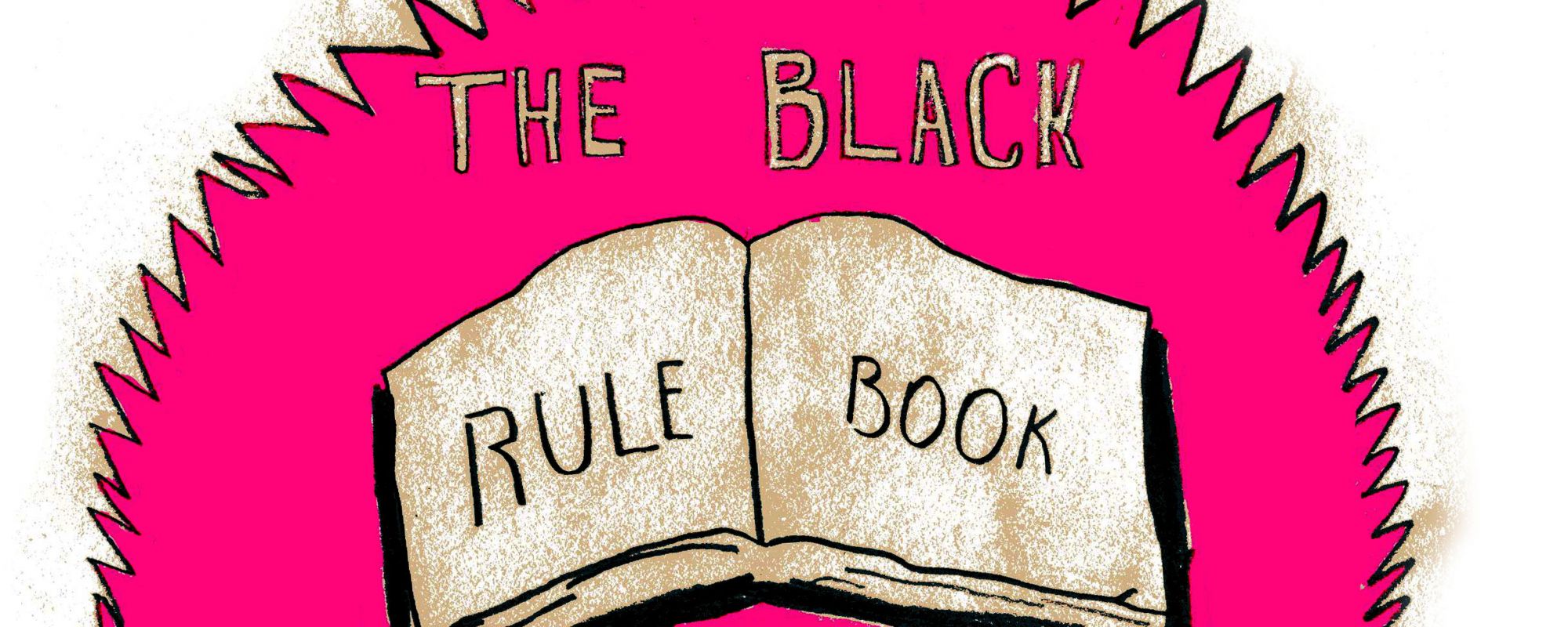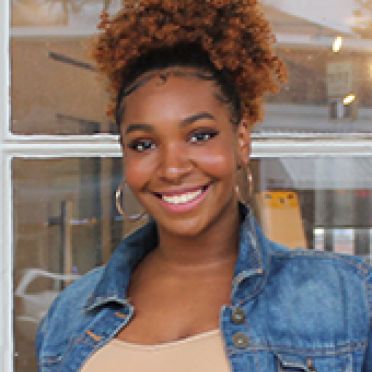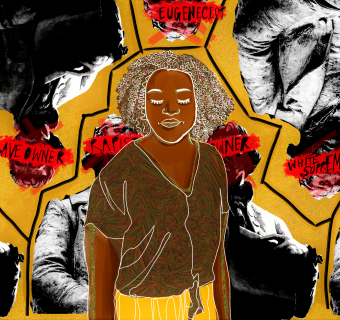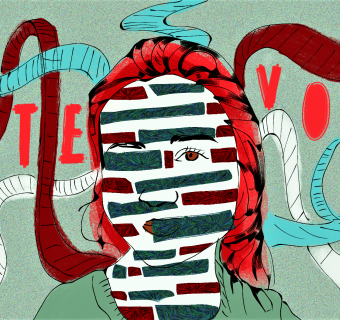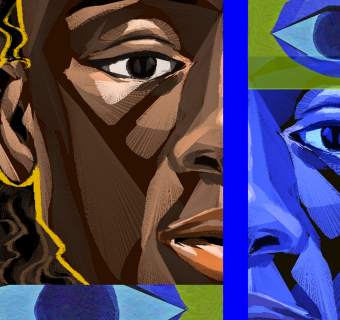Rule #1: Do not deny yourself the actual human emotion of being nervous. That’s ok. Chances are, the only reason you are nervous is because you’re creating something “unconventional.” Remember that your race and your stories do not make you unconventional.
Rule #2: With that said, do not show that you are too nervous. Don’t give them any excuse to pity you or your work.
Rule #3: Do not be afraid to incorporate who you are and what matters to you in your art. Even though there’s a 90% chance you are the only student of color in your workshop, do not be intimidated into “writing white” for the sake of others’ comfort. Create art based on the issues and narratives that interest you. They matter, and it’s important that you’re the one telling it. So if you want to create a work that calls white women out for their laissez faire feminism or criticize the way black men treat their women – do so.
Rule #4: Know that every class at UVa is a weed-out class. This includes the arts. Sometimes it feels like they’re weeding out the students of color. It’s like they’re trying to see how long we can last without the proper support or community provided by the school.
Rule #5: Try to ignore the fact that the number of professors of color in the arts departments is minimal.
Rule #6: Remember knowledge make people feel safe. When things feel “foreign” or “other,” people may attempt to silence you for the sake of their own comfort. Do not let them.
Rule #7: If you let them label your work “exotic,” however, you might get a little more leeway.
Rule #8: Remember these equations:
- Knowledge = safety = opportunity = exposure
- No knowledge = ignorance = fear = rejection = no exposure = ignorance = fear = rejection = no exposure = ignorance = …
Rule #9: Do not be too surprised by all the “Um, I was a little confused,” and the “Um, I wasn’t too sure about,” and the “Um, I didn’t really get it,” when you share your art.
Rule #10: Do not allow your white counterparts to analyze your work in terms of whiteness. Tell them it has nothing to with them. Tell them they’re not supposed to “get it.” And to deal with it.
Rule #11: Do not allow anyone to reduce your artwork into something it’s not. By doing this they are trying to reduce you. Don’t let that shit fly.
Rule #12: Be proud of the art you create and defend it when you can.
Rule #12: Remember not to look “too upset” when you do.
Rule #14: Be cognizant of the fact that this probably means you’re speaking up on behalf of all black artists everywhere.
Rule #15: As much as you want to tell Becky to criticize your work outside... Don’t. I know this is hard.
Rule #16: Remember, just because your white counterparts do not understand your art does not mean it is bad.
Rule #17: Due to the lack of diversity – you feel there is no actual way to know if you suck or not --do not start to doubt yourself. You are not a quota.
Rule #18: Remember it’s ok not to speak up all the time – sharing your art comes with a variety of emotions. It’s ok not to have an immediate comeback. It’s ok to be overwhelmed. You are human.
Rule #19: Show your work to your colleagues or friends. It sucks not having an actual professional to rely on, but friends can surprise you.
Rule #20: Speak up to current professors if you feel uncomfortable in workshops, and state why that is.
Rule #21: Do not be surprised when nothing is done about the issue in the end.
Rule #22: Study your people’s art. Realize that the Westernized way is not the “right” way. Stories and art can come in all forms, shapes and sizes.
Rule #23: Fuck Aristotle’s traditional story arc structure.
Rule #24: Do not let anyone tell you your story doesn’t “go anywhere.” I once wrote a story about a group of black women talking about the struggle at a PWI, but I was told there was no real conflict. We live our conflict every single day of our lives. It is not our fault that you cannot recognize that.
Rule #25: Maybe it’s ok to doubt yourself, but do not give up on yourself.
Rule #26: Sometimes you are going to feel really alone because of the work you’re producing. You are not alone. Someone out there is going to appreciate what you’re doing. Keep going.
Rule #27: Do not let anyone homogenize who you are as an artist. You create work based on the topics that matter to you. Do not feel like that one black kid who’s always going off about black people and black issues.
Rule #28: Do not feel pressured into producing what is “expected” of you because of what you may look like. This is about you. Pick and chose the parts of yourself you want to explore and display for all to see. In other words, do not feel guilty if your work has nothing to do with race or ethnicity.
Rule #29: Do not be afraid to find professors outside of the department to look over your artwork. It’s more likely that we have to go the extra mile to find help here.
Rule #30: Look up artists/writers of color who produce work similar to yours. Email them your questions, concerns, stories... it doesn’t hurt.
Rule #31: When your classroom discusses racially charged work, react as you may. Talk. Don’t talk. You are not the token, black guru. It’s not your job to guide the conversation correctly. If the professor assigned it, they should know how it should be discussed.
Rule #32: Tell your professors to stop assigning “Othello,” every time they want to talk about race in literature. It’s time to start looking a little beyond that.
Rule #33: If you don’t see any authors or artists of color on your syllabus: Say something.
Rule #34: As a student of color, take your entire UVA experience with a grain of salt.
Rule #35: Find groups or CIOs that are interested in the same topics you are. This is not self-segregation. This is survival.
Rule #36: Do not get discouraged if the people who look like you may not share the exact same interests as you. That’s normal.
Rule #37: Most of us have been “writing white” our entire lives. It’s going to take some time to get used to the other way. Be patient with yourself. You’re still learning. This is by no means your own fault.
Rule #38: Remember that everyone is still learning. You. Other students. Professors. It’s not your responsibility to be the teacher, but do not allow anyone to define you in ways you do not want to be. Be honest, speak up when you can, and BE. THAT. BITCH. WRITE THAT STORY. PRINT THAT ARTICLE. STOKE THAT BRUSH. It doesn’t matter if they don’t understand.
Rule #39: I’m sorry that developing your artistry in certain environments can get so hard. But it’s worth it. What you have to say and how you want to say it is important. It’s a gift. Do not be fooled or silenced into thinking that your work, your ethics, your mind, your expression, your soul – does not matter.
Rule #40: I’m sorry it takes so much bravery to be who we truly are. When you do find your courage, do not let it go to waste.

